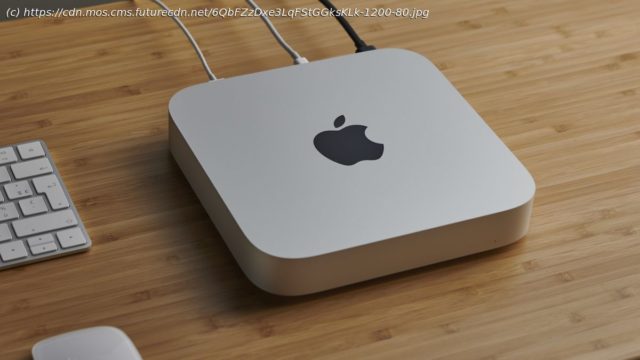The Mac mini (M1, 2020) is the first desktop Mac to feature Apple’s very own M1 chip.
The Mac mini (M1,2020) has been out for a year now with an update expected sometime early next year. So, though finding a sale on Apple products during a shopping holiday is usually a bit tough, this diminutive computer is a prime candidate this Black Friday and Cyber Monday. In fact, some retailers have already started slashing prices on Apple’s most affordable computer. If any Apple product needed an update, it was its smallest desktop computer. And, with the Mac mini (M1,2020), the company not only did that but set the bar high for future iterations, especially considering Apple’s claims that its CPU performance is three times faster and GPU performance six times faster than the previous Mini. What makes this update so special is the introduction of Apple’s in-house M1 system on a chip (SoC) which not only debuted with the Mini but with the MacBook Pro 13-inch (M1,2020) and MacBook Air (M1,2020) notebooks. This Mac mini might be just as slim as its predecessor but it is a powerful machine, compiling Xcode up to three times quicker than the prior model, rendering Final Cut Pro projects, and even running intensive games. Since the Mac mini has developed a following over the years, its fans have surely been excited by the inclusion of the M1 chip in this model. And, considering how much performance has come out of such a small computer since its introduction, we’re pleased with the extra power that the M1 model has. It continues to be among the most versatile options in Apple’s computing line. The Mac mini is also one of the most unusual devices from Apple, which is what makes it special but is probably why it often gets ignored by the company. Though we had a refresh just a few years back with the Mac Mini (2018), that refresh was four years in the making. So, it’s nice to get such a substantial update, not to mention seeing the macOS 11 Big Sur operating system on display in the Mac mini 2020. Don’t forget there’s a new OS you can upgrade to for free, the macOS Monterey, if you want to make the most of the Mini. When it comes to price, Apple is asking for $699 / £699 / AU$1,099 for the model with 8GB of RAM and 256GB of storage. This is actually cheaper than the base model of the Mac mini 2018, so to see a performance boost for less money is really impressive. And, it really has got a performance boost. Even though the M1 chip that powers the Mac mini is Apple’s first chip for a desktop PC, it’s really knocked it out of the park. This tiny little PC feels fast and responsive, and it was able to punch above its weight when it came to intensive video rendering tasks. However, we should note that the move to the M1 chip means the memory is capped at 16GB, and you can no longer use external graphic cards (eGPUs). This will disappoint anyone who needed to upgrade their Mac mini. Overall, the Mac mini (M1,2020) is an impressive bit of kit, with Apple’s latest hardware and software taking center stage. It’s great to see Apple embracing its quirky little PC, and using it as a showcase for its M1 hardware in a desktop PC. In many ways it continues to offer what we love so much about the Mac mini: it has a compact, attractive design, with some great components inside, and the ability to run legacy Intel apps, along with M1 apps and iOS apps, is genuinely exciting. However, for people who want a productivity machine, the fact that the Mac mini no longer supports eGPUs will be a major disappointment. Sure, most owners will never use one, but this is a PC that’s developed a cult following amongst video editors and photographers thanks to its scalability via eGPUs. With that feature now missing (and memory limited to 16GB), the Mac mini (M1,2020) may not offer everything that more demanding users need. The Mac mini (M1,2020) is on sale now globally, and starts at $699 / £699 / AU$1,099 for the model with 8GB of RAM and 256GB of storage.




![Mniej ciąż, więcej zgonów na porodówkach. Nowe śledztwo ws. afery PCK [SKRÓT WYDARZEŃ DNIA]](http://nhub.news/wp-content/uploads/2025/10/thumb70fbf213ea84e5077c0426d0bed89617-100x75.jpeg)

